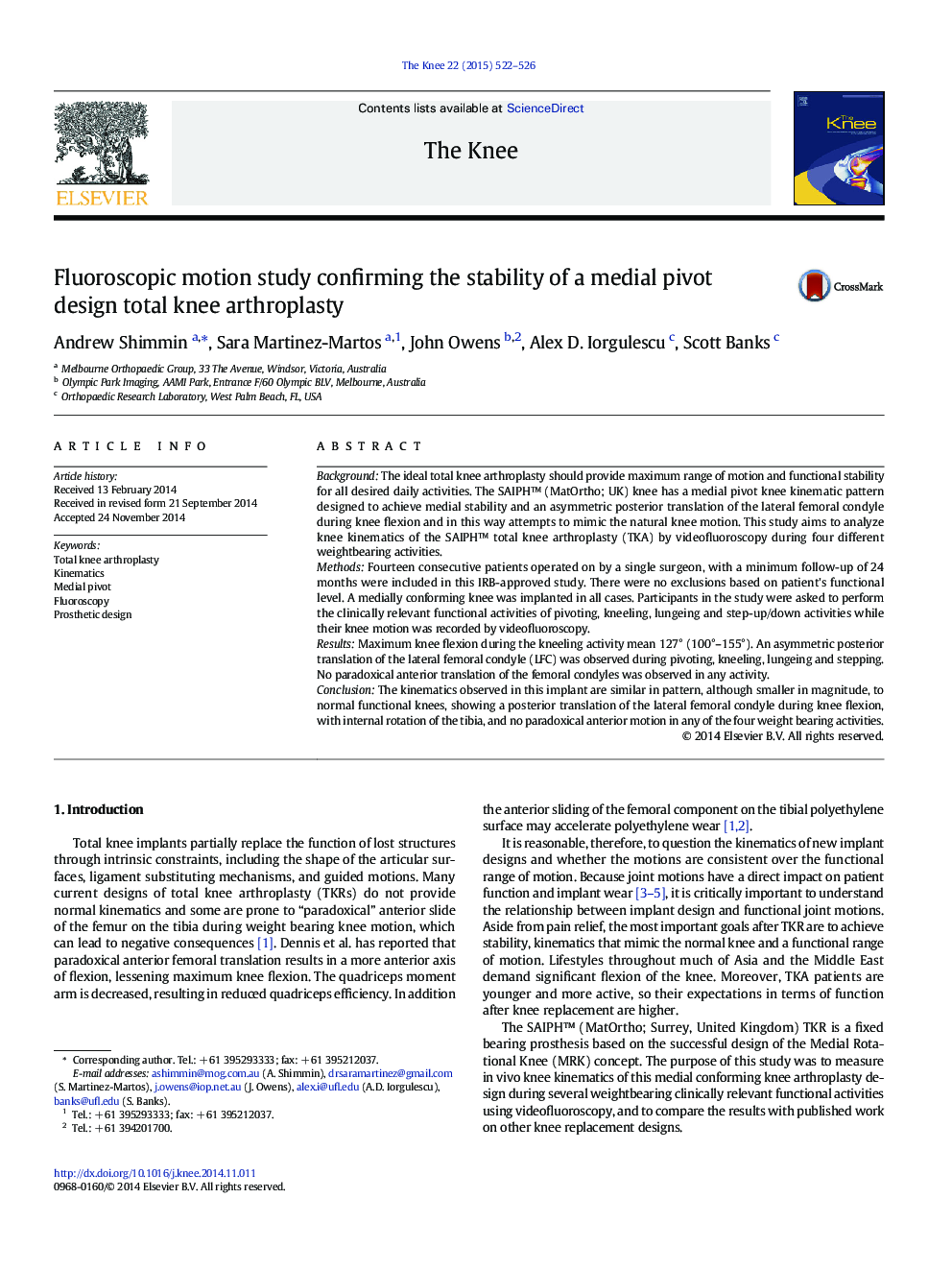| کد مقاله | کد نشریه | سال انتشار | مقاله انگلیسی | نسخه تمام متن |
|---|---|---|---|---|
| 4077357 | 1267214 | 2015 | 5 صفحه PDF | دانلود رایگان |
• A medial pivot total knee design showing stability throughout all range of motion.
• No “paradoxical” anterior femoral translation during weight-bearing activities.
• Fluoroscopic assessment of a medial pivot knee consistent with the design intent.
BackgroundThe ideal total knee arthroplasty should provide maximum range of motion and functional stability for all desired daily activities. The SAIPH™ (MatOrtho; UK) knee has a medial pivot knee kinematic pattern designed to achieve medial stability and an asymmetric posterior translation of the lateral femoral condyle during knee flexion and in this way attempts to mimic the natural knee motion. This study aims to analyze knee kinematics of the SAIPH™ total knee arthroplasty (TKA) by videofluoroscopy during four different weightbearing activities.MethodsFourteen consecutive patients operated on by a single surgeon, with a minimum follow-up of 24 months were included in this IRB-approved study. There were no exclusions based on patient's functional level. A medially conforming knee was implanted in all cases. Participants in the study were asked to perform the clinically relevant functional activities of pivoting, kneeling, lungeing and step-up/down activities while their knee motion was recorded by videofluoroscopy.ResultsMaximum knee flexion during the kneeling activity mean 127° (100°–155°). An asymmetric posterior translation of the lateral femoral condyle (LFC) was observed during pivoting, kneeling, lungeing and stepping. No paradoxical anterior translation of the femoral condyles was observed in any activity.ConclusionThe kinematics observed in this implant are similar in pattern, although smaller in magnitude, to normal functional knees, showing a posterior translation of the lateral femoral condyle during knee flexion, with internal rotation of the tibia, and no paradoxical anterior motion in any of the four weight bearing activities.
Journal: The Knee - Volume 22, Issue 6, December 2015, Pages 522–526
